After our lovely walk along the cliffs of San Sebastian, we headed off to our next big hike in the Pyrenees. On our way, we stopped in Pamplona, a city in the Spanish county of Navarra, where the festivities of “El encierro de los San Fermines” (The Running of the Bulls) take place.
These festivities (“fiesta’’” in Spanish) are held yearly during the week of the 6th of July in honour of the saint of the city, San Fermin, hence their name.
The festivities consist of releasing a herd of around twenty adult bulls (“toros” in Spanish) along the streets of Pamplona and people running, after, between, in front of them and, inevitably, under them; just for fun.
The run lasts five minutes and it only covers 440 metres. The streets involved in the route are enclosed with timber fences to protect the shops and houses. The starting point is an enclosure, where the bulls are kept during the night, just outside the old town, and it ends in the bull ring, located in the main square, where the “toros” will be killed in the bull fighting that would take place that evening.
These celebrations became renowned world-wide since the author Ernest Hemingway, a big fan and frequent spectator of them (I am not sure if he ever ran the bulls), immortalised them – for good or for bad – with his novel “The Sun Also Rises” (in Spanish, “La Fiesta Nacional”).
Although I am not a supporter of this “fiesta”, I was curious to find out more about it.
Every year the “fiesta”used to get broadcast on the main news across the Spanish TV (and I think it still is). Images of the people falling under the bulls, getting trampled and injured, are reported daily during that week. Spanish people watched these images impassively.
When I was a child, I remember stopping what you were doing and watching how many people had been caught that day. You would simply exclaim: “these young lads, they are just mad”. It is only when someone used to get killed that people lamented the tragedy. Is that a surprise? Not really, it now becomes clear to me that there was a sense of morbidity about it.
We arrived at Pamplona the night before and planned to stay in a permitted car park close to the old town. However, as soon as we reached the outskirts of the city we found a proper aire which had water and electricity, and we headed for it – confirmed, the motorhome culture is also quite settled in Spain these days, which is good for us –. We planned to visit the city during the next day and headed off to the Ordesa Park in the Pyrenees in the afternoon, as it was still a good three hours drive from here.
So, we left Dora parked in the aire and took a bus to the centre of the city heading towards the tourist office – we are getting better of how we approach the cities with Dora, or so we thought –. With limited amount of time, we planned to follow the “encierro” first and see more about the city a bit later if time permitted.
With all the information we collected in the tourist office, we went to the centre of the city to sit in a cafe and plan the route.
This is a typical Spanish main square, with surrounding “soportales”, arches providing shade, full of lively bars with seats outside and lots of people in sunglasses, looking cool, slightly laying backwards in their chairs, soaking up the sun.
You can tell they could have been sitting there for hours, enjoying the sun, like lizards. I was happy joining them that morning.
We chose this typical Spanish cafe dated 1880 and had a strong, short espresso. I am not used to this high dose of caffeine. In a few seconds my heartbeat was rising, rushing me to start the route around Pamplona, all I needed was a few bulls!
We headed towards the beginning of the “encierro”. The origin of this tradition goes back to the medieval times. The bulls destined for the bullfighting were led around the streets of Pamplona to the bull ring. Locals boys got used to running in front of the bulls, much to the annoyance of the shepherd. This practise was prohibited by the authorities at the time. However, it became so popular that it ended up, ironically, becoming a tradition.
The bulls are kept in this enclosure just outside the old town. It looked rather manky and very low key. Tacky graffiti of bulls are painted around the walls. Is that necessary?
The bulls are released at 8.00 am in the morning. From here, the bulls walk “mansamente” (calmly and peacefully) all the way up to the old town. They are not aware of their destiny yet.
Here is the starting point of the run, in a the street called “La Cuesta de Santo Domingo”, a 280-metre slope up to the city hall. Hundreds of people, nervously and excitedly, wait here for the bulls, after being up all night drinking. The perfect state to put yourself in front a bull.
A statue of the saint San Fermin is within a niche in the wall.
Many runners gathered here to chant to the image of the saint to ask for protection. This action is utterly laughable, like all superstitions. Obviously, San Fermin protects the vast majority of the runners only allowing the nasty ones to be gored.
The bulls get agitated by the sight of the large crowd of people shouting at them, encouraging them to come forward, “come on, bring it on!”. The bulls, probably incredibly scared, start racing up the street. For the people, the fun starts!
This is how quiet the Cuesta de Santo Domingo was that day. Very different from when the festivities take place.
At the end of the Cuesta de Santo Domingo, there is the City Hall, the focal point of the “Fiesta” and the scene of the “chupinazo”, a rocket marking the beginning of it all.
The bulls might feel relief of reaching this open space, without being fully aware of what is waiting for them round the corner. The authorities keep a couple of fences here all year round so that the tourists know what it would be like.
You can pick out the route of the fences by the metal plates on the ground.
Gary standing in the plaza to demonstrate the scale of the space compared to the narrowness of the streets the animals have to run in.
After leaving the City Hall, the herd continues on its way along the narrow Calle Mercaderes, to the well-known Calle Estafeta. The point where the two streets meet marks one of the most dangerous and popular points on the Bullrun. The high speed which the bulls run at causes them to bump into each other, fall and crash into the fence when they are faced with a 90-degree bend to the right. Very often, people also get caught in between the bulls. Poor beasts. No sympathy for the people, though.
This is the 90-degree bend, which is much narrower when it gets protected with the fences. “Everything looks much bigger on TV”, I thought. This is where I would get a flat, to charge astronomical amounts to ignorant people who are interested in watching this carnage.
Along the Calle Estafeta, there are dozen of shops selling trash. Here, Gary, tempted to buy a “Toro” sticker for Dora, like we have on our car back home.
This is the sort of stuff you would get to people you don’t really like. It is so touristic that they even try to charge you for taking a photo. Fat chance we would pay, we still got our photo, though.
Gary and I really loved this street, seriously. Not for what we have described above, but for its local “pintxos”, sophisticated, tasty and quirky tapas. These “pintxos” are not free (like in many other places in Spain), but they are worth every euro.
Dozens of bars line the street, competing to offer the best “pintxos”. We couldn’t resist entering one of them. We shared two; a smoked salmon, stuffed with seafood and cream cheese, and a giant croqueta stuffed with serrano ham (very traditional made out of thick béchamel sauce, fried in breadcrums). Delicious!
The typical image of dozens of serrano hams hanging from the ceiling caught Gary’s attention. We didn’t buy any. Too big and too smelly for Dora. They would look ridiculous swaying around her cabin.
After our feast of “pintxos” we continued to walk along the route of the Bullrun. The slope to the lane entering the bullring is the final straight. This is where the bulls are kept to be killed in the bullfight which will take place that evening. Another stupid tradition which I entirely oppose.
The original bullring is very old, but was recently modified by Rafael Moreno to increase its capacity. A really good example of contemporary architecture living ‘cheek by jowl’ with traditional. You would never see this in the UK! GDR
To the left, there is a granite statue of the impassive, distinguished spectator of the Bullrun, Ernest Hemingway.
At this point, a local seventy-year old man approached us. “Are you foreigners? Have you come to Pamplona to follow the bullrun”? And then he started; “in the old days…”
He told us what the “encierro” was like when he was young. He used to run the bulls and, at the time, there wasn’t as many people. Only young lads, ran dozen of metres away from the bulls. “These days”, he said, “you see three times the amount of people, all in their forties and fifties, waiting eagerly to see a gap in between the herd to jump in”.
I started getting quite bored. Quite conveniently, his wife called him on his mobile phone. Politely, we waved at him, thanking him and left him to it.
We finally arrived at the last point of the tour, the monument of the Bullrun by the Bilbao-born author Rafael Huerta. This monument is eleven metres long and it is cast bronze. It represents the ‘bravery’! and anguish of eleven runners running in front of six bulls.
I think the author missed the point completely. Rather than the so called courage and heroism of the runners, how about a sculpture dedicated to the misery, suffering and degradation of the poor bulls?
As you may have gathered by my comments, I strongly disagree with this barbaric tradition. Human beings should be more sophisticated and smarter than animals. Can they not come up with more creative ways of entertaining themselves? Actually, this just goes to show how animalistic we still remain. We should know better, we should do better.
However, I would like to emphasis that I am not less patriotic than any of my country fellows who defend these celebrations just because it is a tradition and, therefore, a national symbol. Spain is more than bulls. This country has plenty of other wonderful things to be proud of.
Nonetheless, things are changing, even in Spain. The new generation care less and less about bulls and bull fighting. In some parts of the country, like in Barcelona, bull fighting has already been banned. I have no doubt that these cruel practices will eventually disappear.
It is difficult to imagine how a city like Pamplona could exist without “Los San Fermines”. Sadly, it is tied up so intrinsically with the financial success of the city. What could replace it? In Guisando we also have a running of the bulls. The bulls here are small, stuffed, on one wheel and are pushed around by the youth, who liberally spray with water the locals from the nostrils of the bull. Great fun, but would it entice world wide attention? Would the dumb animals from the USA, packed with dollars, flock to such a festival? GDR
By the time we finished the route, it was nearly lunchtime and we still needed to top up my Spanish phone as I needed to call the refuges in the Pyrenees to stay during the following week. In Spain, shops close for two hours at lunchtime so we rushed into the first “Movistar” mobile phone shop we saw (the biggest Spanish mobile phone operator).
‘Shops close for two hours!’, sometimes it seems that shops open for two hours only during the week, these times of opening are random and we are always missing them! Coming from a country where everything is nearly always open, this is a cause of frustration and continuous disagreement between me and Susana! GDR
We took a bus back to where Dora was. When I tried to call the refuge to let them know we were due to arrive that evening, my phone had not been charged, not sure why. We drove all the way back to the mobile phone shop in the centre of Pamplona but it was already close, I will have to call a bit later. As you can see, we are not doing very well with our promise of keeping Dora out of the city.
SM

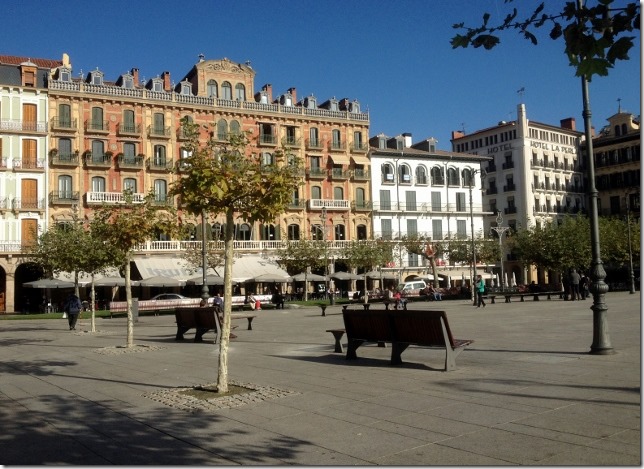
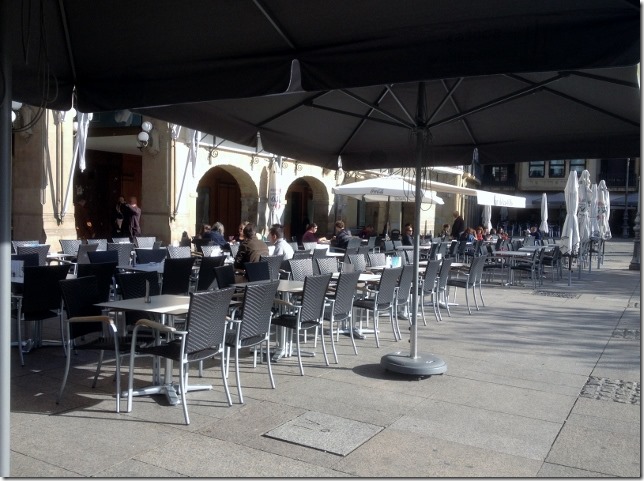
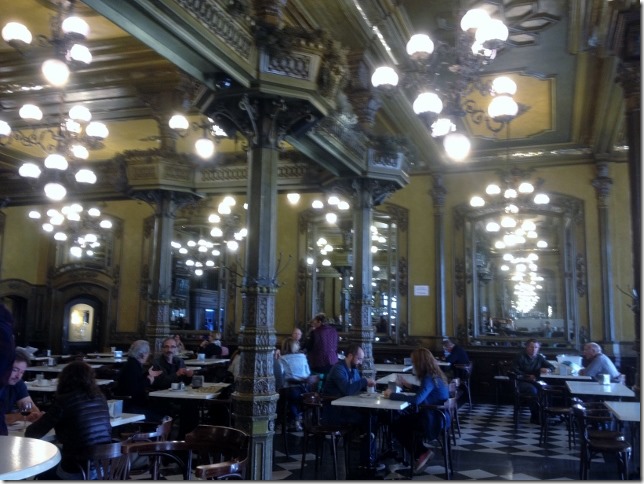
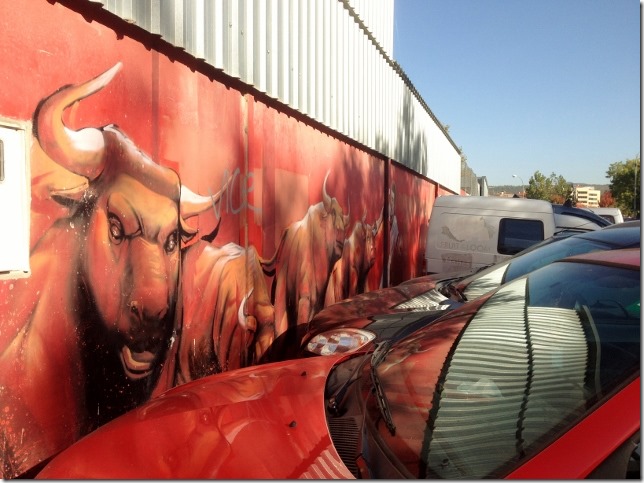
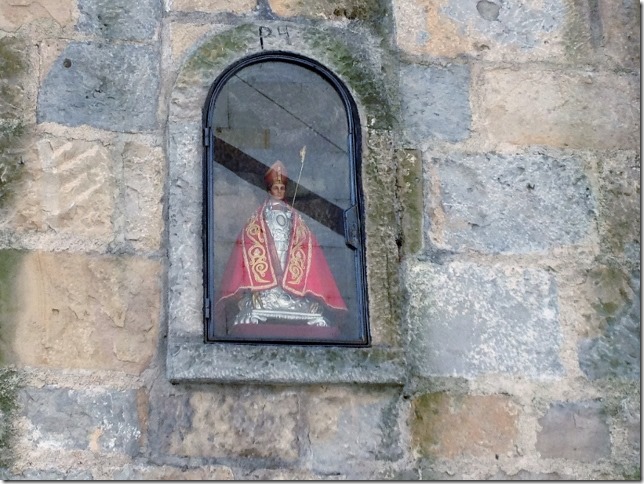

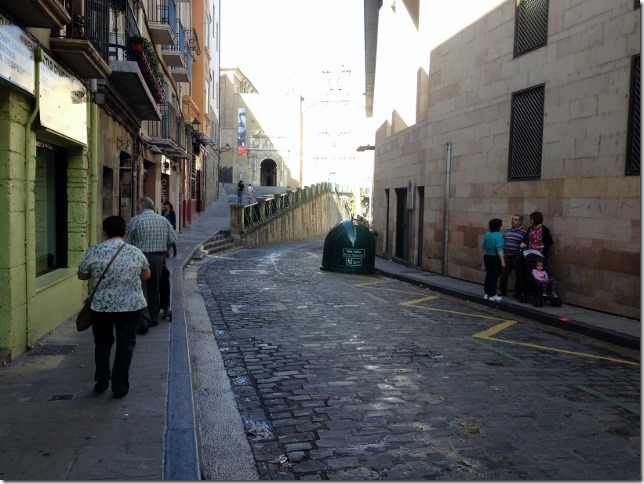

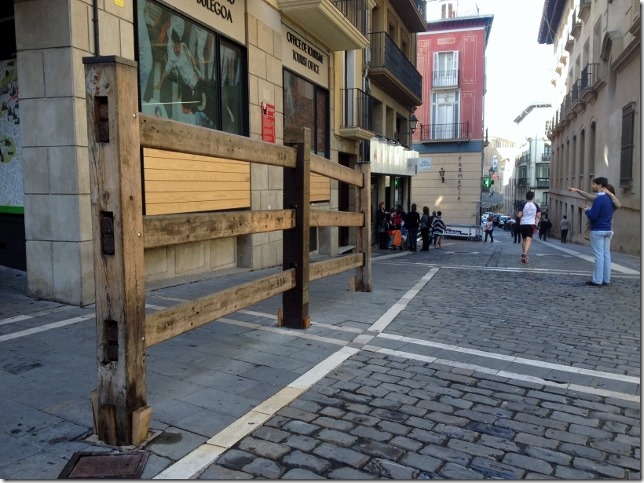
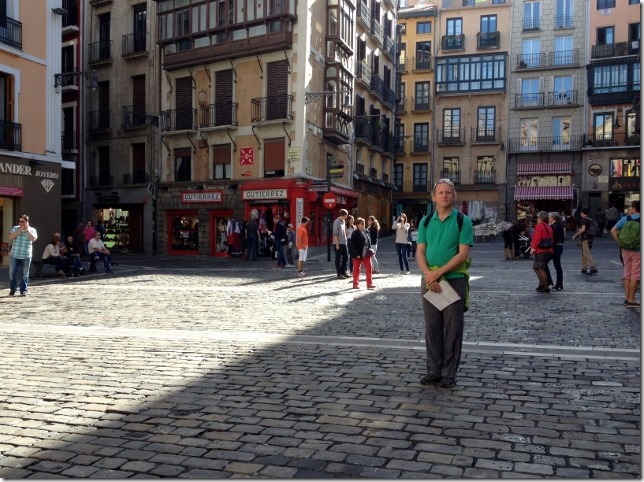
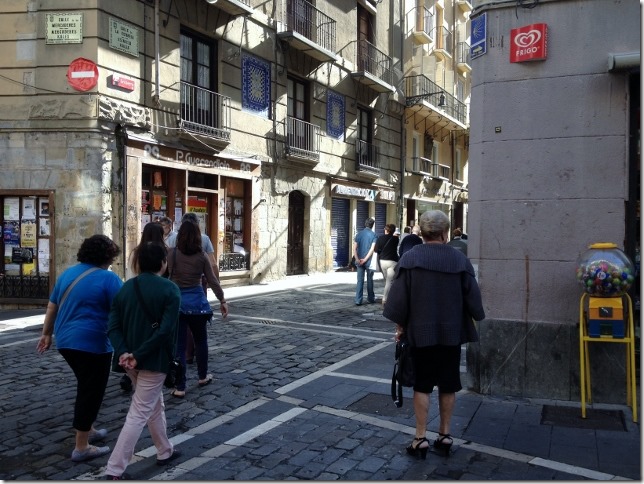
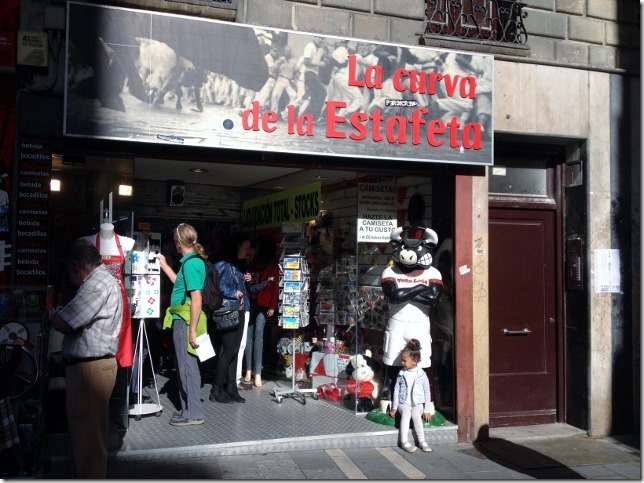
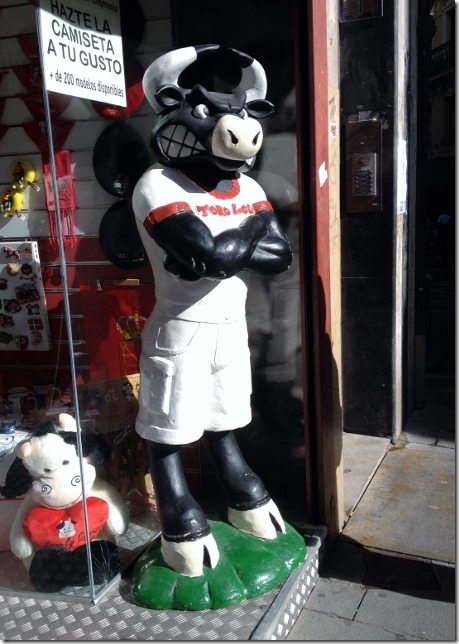
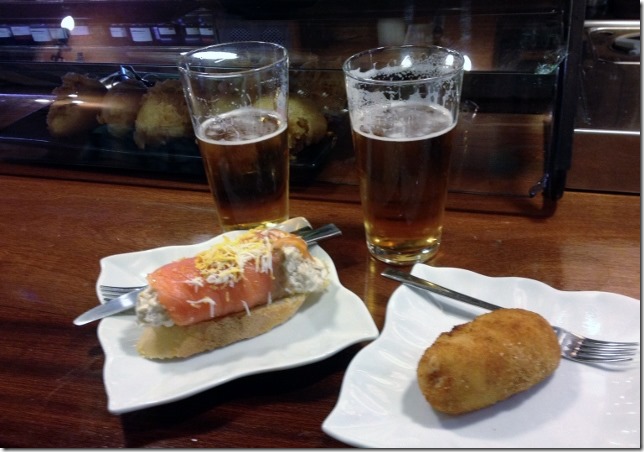
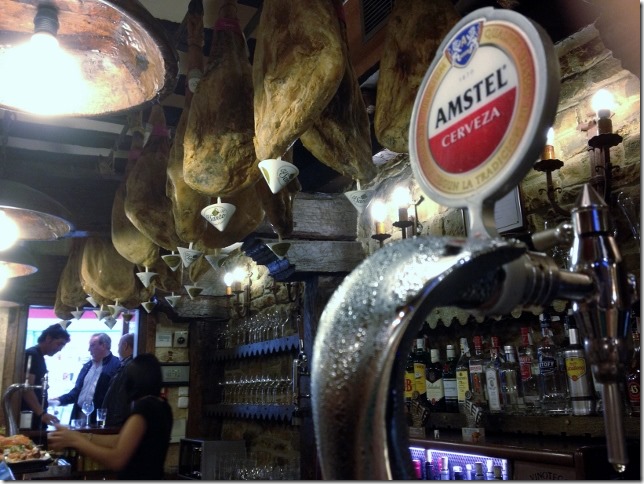
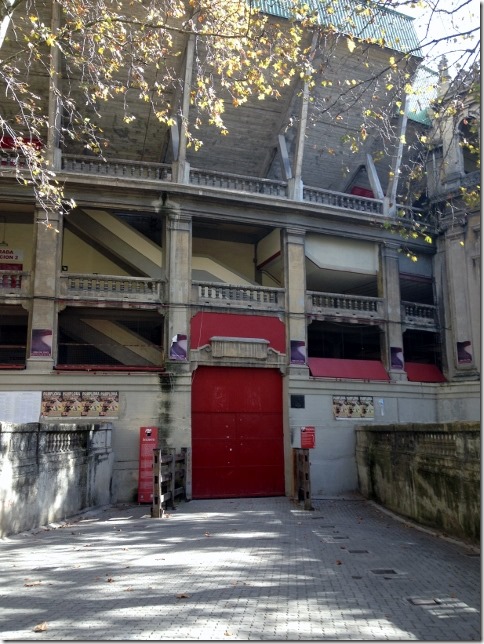
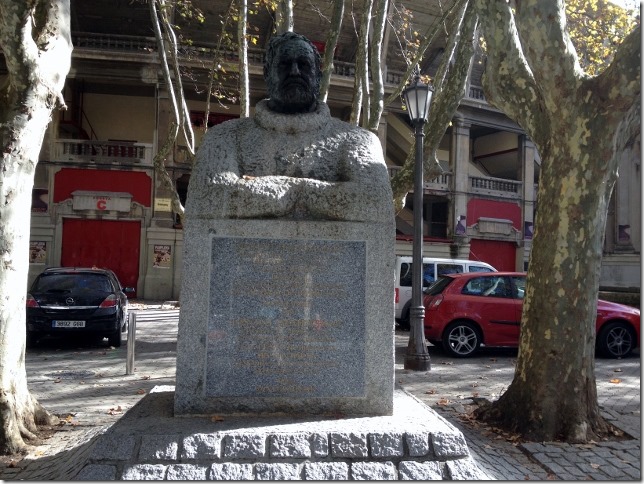
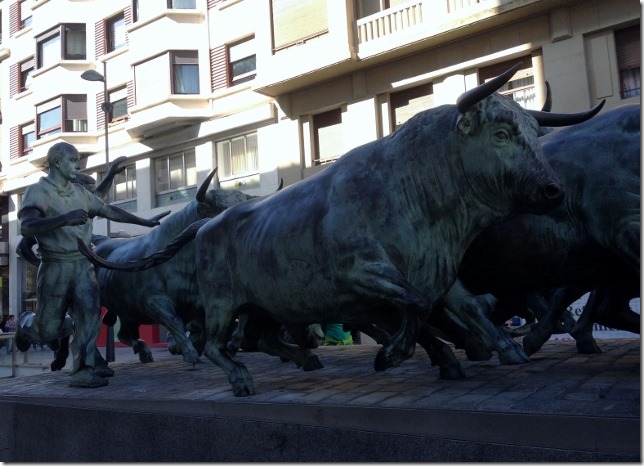







Very good document about the San Fermine´s history.
I´m not very fond of that but I´m afraid Gary is right , it´s a matter of money, and if that absurd tradition didn´t exist, almost nobody would know Pamplona.
Maybe you problaby hadn´t spent a minute there.
That pintxos look delicious :-p
Yeap! you are right. It is all about the money, like most of the things in life.
Susana, did you run after the Toros????
Ha quedado claro que no sois partidarios de las corridas de toros, a mi tampoco me gustan, sin embargo lo veo en televisión todos los años( si puedo) solamente para ver las locuras que cometen, pero estamos de acuerdo que hay gustos para todo, sobre todo cuando hay intereses y ganancias en ellos, soy mas partidaria de los “pintxos”, el de salmón tiene una pinta que te puede dar algo.
Ya sabias que yo no he sido nunca muy partidaria.